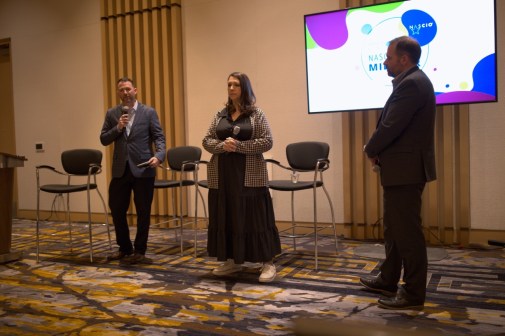Texas moves ‘beyond IoT’ in new state technology strategy

A biennial technology plan published earlier this month by the Texas Department of Information Resources sets a goal of the state government moving past simply building interconnected networks of connected devices and toward a more mature, effective marketplace of digital services.
John Hoffman, Texas’ chief technology officer, told StateScoop Monday that the statewide agencies and public universities DIR advises are increasingly tailoring their digital services to meet specific consumer needs, rather than focusing on simply connectivity and accessibility for employees working outside of the office or on their mobile devices. The new plan, he said, goes “beyond the ‘internet of things.'”
Though DIR’s State Strategic Plans lay out the state’s technology agenda over four-year timeframes, the documents are published every two years. Hoffman said that the plan released this month, designed to be implemented between 2020 and 2024, is more consolidated than previous iterations — slimming down from five priorities to three — and more descriptive in its objectives.
The plan, which was composed by a committee made up of federal, state, university and industry representatives, identifies secure service delivery, advanced data management and agile IT development as the three biggest priorities for the state between 2020 and 2024. While previous versions of the plan made frequent references to Texas agencies adopting mobile devices and other internet-connected technologies, the new document drops any mention of the “internet of things,” the name given to networks of interconnected devices like environmental sensors and traffic cameras. Still, the plan states that the demand for “efficient, and effective” government services remains high. But rather than prioritizing digitization, the state is “understanding customer needs and preferences at the forefront of design,” building systems that meet specific needs.
“When you think about the internet of things, and while that had its own connotation and definition,” Hoffman said, “I think we’ve moved beyond that in getting into: ‘What are those digital services that we’re doing? How are we driving the customers need and the process automation?’”
The added emphasis on digital services was inspired in part by Hurricane Harvey, the 2017 storm that caused $125 billion in damage after making landfall near Houston. More than $5 billion in federal aid was delayed for months, placing the state’s general land office under pressure to process grants quickly once they finally arrived. The new strategic plan highlights the creation of a web platform called the Texas Integrated Grants Reporting, or TIGR, project, which was built to allow residents to securely scan documents, view aid reports and manage their relief applications online, saving weeks in grant deployment time.
That system represented a maturation in the state’s technology philosophy, according to Hoffman and DIR Executive Director Amanda Crawford.
Crawford, who has been with state for nearly 20 years, said data management is another area where the state has matured. In the state’s 2018 plan, one of its five goals was to improve the state’s “data utility,” with the objective of creating a mature data-management program. The plan released earlier this month goes a step beyond, she said, in asking agency leaders to look for “accessible and dynamic solutions that support various types of technology users” and to “spur change with data driven decisions supported by business intelligence.”
The 2020 plan highlights the SPART-N tool, a data platform announced in January 2018 that’s used by the Texas Department of Public Safety’s intelligence and counterterrorism division. The platform turns public-safety data from more than 11 sources into visualizations that DPS analysts would have previously spent time manually combing through.
“It’s more of that maturation process that we’re seeing,” Crawford said.






